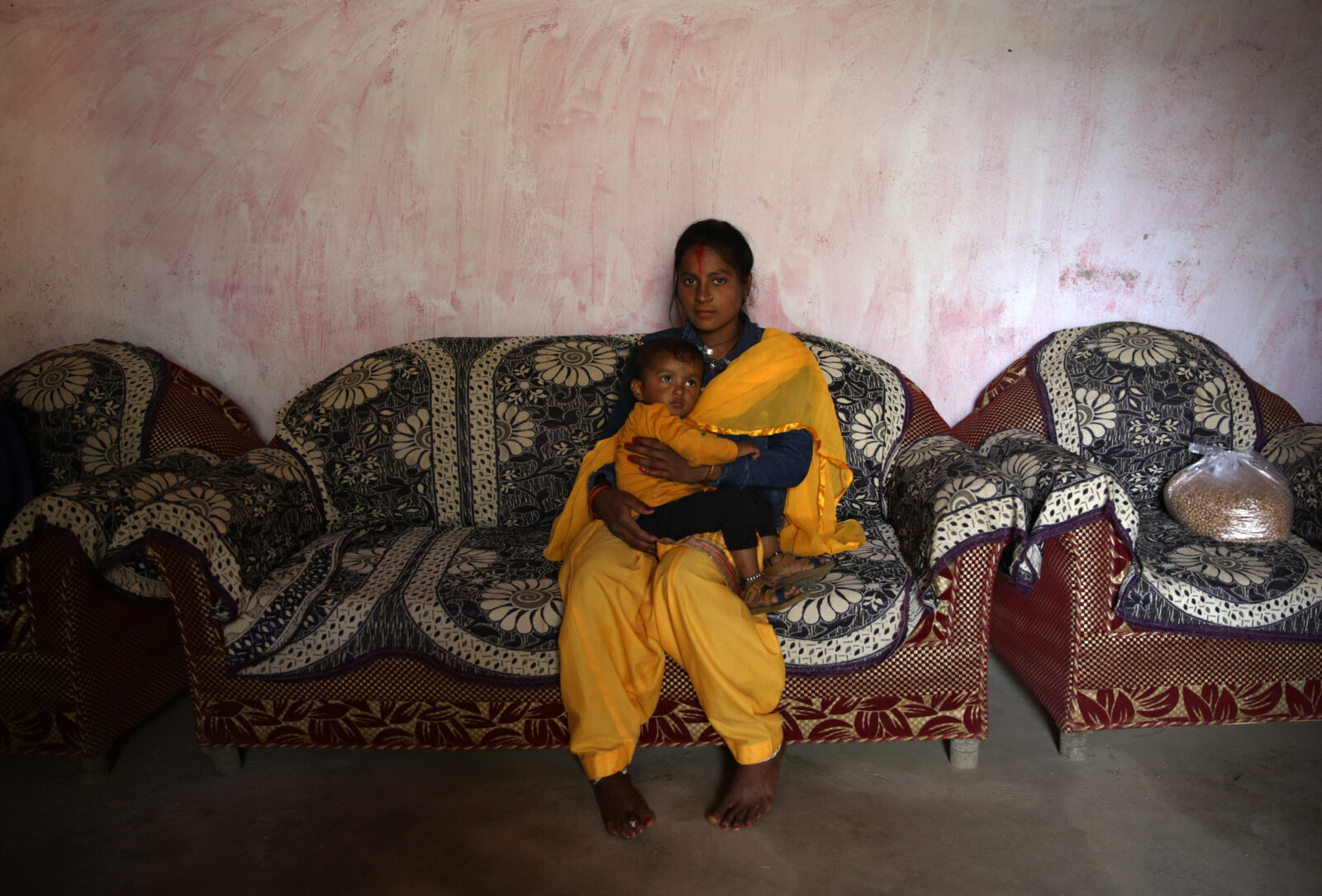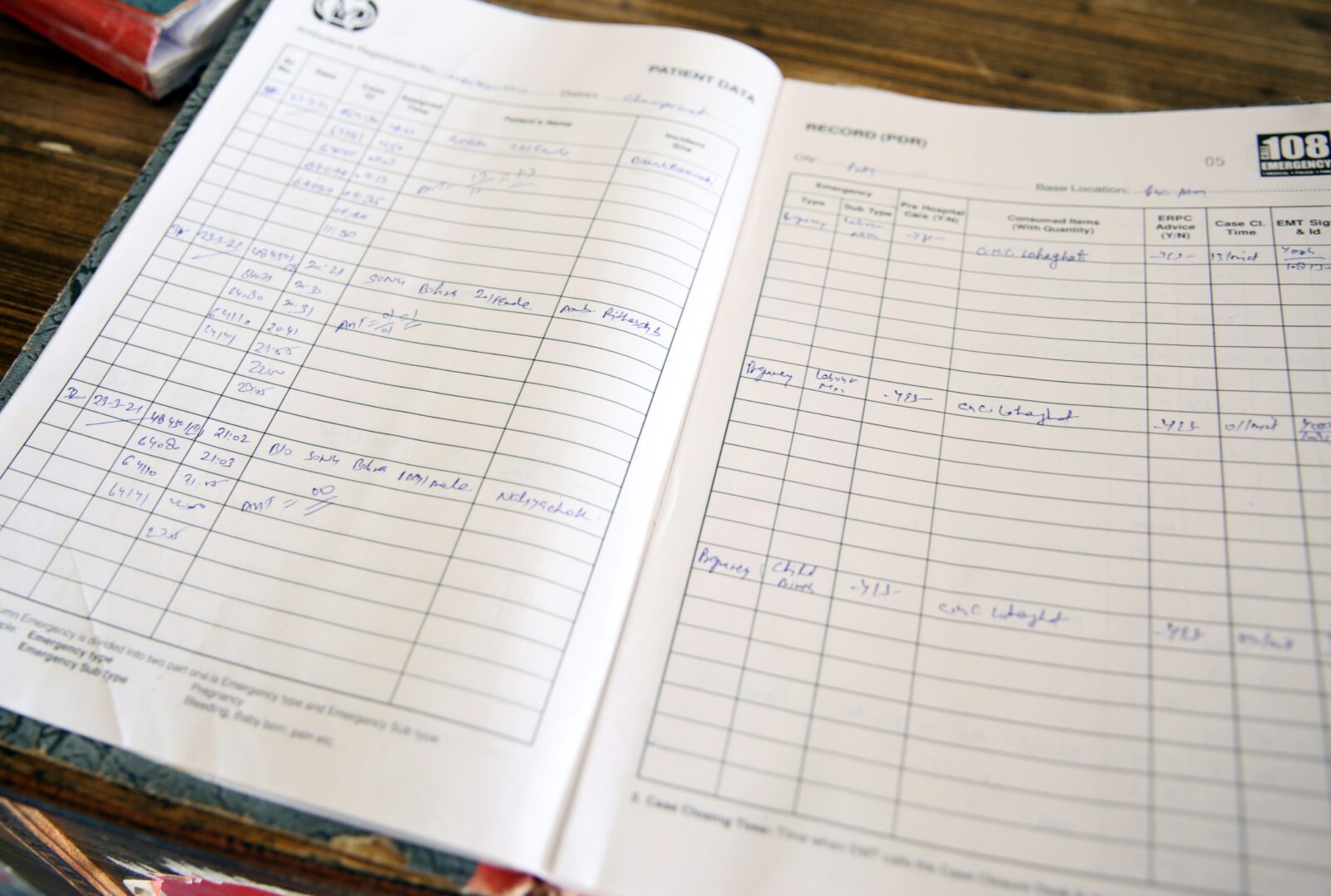Sonu Bohra’s first pregnancy coincided with one of the longest dry spells she had seen in her home village, high in the Indian Himalayas. By the time she went into labor, it hadn’t rained for almost six months and the taps had run dry for days.
When her waters broke, an ambulance came to take her to the medical center in the nearest town. But they refused to admit her, saying they’d run out of water. The ambulance driver decided to take her to the next center, 55 kilometers away – a drive of several hours on the poor roads. But when they arrived, they discovered the same problem. They set off for the next health center, but it was too late – the baby was coming. In the end, Bohra gave birth by the roadside, helped by the ambulance driver.
As she watched her healthy two-year-old son playing and shrieking with joy outside their home, Bohra recalled the excruciating pain she endured giving birth to him. She knows it could all have ended very differently.

“I was terrified,” she says. “Other pregnant women have died. Everyone knows that these [maternal] deaths are high in this area. When the first hospital said no, I was worried that I might end up dying as well, like the others I’ve heard about. I started praying. My biggest concern was that the child inside me should remain alive and well.”
For nearly two decades, India has been working to transform its record on maternal health. It has expanded maternity units in rural areas, provided free ambulances to ensure women can get to them safely, and set up a vast network of community health workers known ASHA (Accredited Social Health Activist) workers to provide advice, organize antenatal check-ups and coordinate transportation to hospital when women go into labor.
The proportion of women delivering their babies in hospitals or clinics rather than at home has more than doubled, from just over 40 percent in 2005-06 to nearly 90 percent in 2019-21. India’s maternal mortality rate (MMR) has dropped from 400 deaths per 100,000 births in 2007-09 to 97 per 100,000 in 2018-2020, meeting a government target to bring it below 100 by 2020.
It’s one of the country’s biggest public health victories of recent decades and has won international praise. Yet as Bohra’s experience shows, the strategy of encouraging institutional deliveries has hit an unexpected hurdle – climate change.
India has 18 percent of the world’s population and just 4 percent of its water resources, according to the World Bank. It is the world’s largest user of groundwater, exceeding the U.S. and China combined, according to a United Nations report published in October that warned its north-western region would experience critically low groundwater availability by 2025.
As a changing climate has brought more erratic rainfall patterns that are less easy to predict than they were, water shortages have made it impossible for hospitals in drought-hit parts of the country to operate year-round. Even in major cities, some are having to delay planned surgeries during the driest times of the year – the hot months ahead of the monsoon rains, when water reserves run low. And unlike a planned surgery, labor cannot be postponed.
In 2019 the southern city of Chennai – home to about 5 million people – came close to completely running out of water, threatening essential services and forcing authorities to bring supplies in by train.

In mountainous areas like Uttarakhand – the north Indian state where Bohra lives – the problem is particularly acute because the terrain makes it challenging to build and maintain infrastructure like water pipes or truck in water by tankers, according to Parmanand Punetha, chief engineer at the Uttarakhand water department.
The main hospital in Uttarakhand’s Champawat district has struggled for years with water shortages. The main aquifer that its piped water supply comes from dried up at the height of the summer, when it has to rely on supplies coming in by truck. The hospital needs 25,000 liters of water a day, but the trucks only deliver about 10,000 a day, if they get there at all – sometimes they are blocked by landslides. A new pipeline was installed this year that draws water from a different aquifer. But with extraction outpacing the rate at which these underground sources naturally replenish, that will not last forever. “More springs are running dry with every passing year,” says Punetha.
On a hot day during this year’s dry season, a long queue of pregnant women were waiting to be seen. Rukmani Devi, 33 and six months pregnant, said she usually found the washrooms at the hospital were closed. “I really worry about giving birth here,” she confided. “There’s nowhere even to wash yourself after giving birth.”
The hospital’s Chief Medical Officer Dr KK Agarwal says he’s aware of other cases like Bohra’s, but couldn’t put a figure to it. “We have been raising this issue [water supply] with the authorities for years now,” he said. “Any project that needs government approval has to go through a long chain of paperwork for approvals… It takes time.”
With no data showing how often water-related maternity ward closures occur, it is difficult to know how many women have been impacted. But there is anecdotal evidence that it is happening elsewhere in India as overexploitation of groundwater has led the water table to drop, making it harder to source water during the summer.

Dr Rakesh Kumar heads a small government health center in the eastern state of Bihar that relies on water deliveries by tanker during the dry season, but receives far less than it needs to operate at full capacity. The center has been forced to turn women away fearing infection if hygiene standards cannot be maintained.
“We perform a minimum of 200 deliveries a month here,” he said. “But during peak summers, the centre receives only one water tanker a day. Most days we have to ask patient’s attendants to bring water from the nearby hand pump, or are forced to send them away for delivery if we cannot manage to get water.”
In neighboring Jharkhand state, one health worker said her local primary healthcare center had suffered consistent water shortages in recent years. “The submersible pump at the health centre stopped working a few years ago as the ground water dried up,” she said. “The washrooms are never open. Women here now prefer to deliver babies at home. We have to spend a lot of time and energy convincing them to go to the nearest hospital for delivery.”
Dr. Margaret Montgomery, the World Health Organization’s lead on water, sanitation and hygiene in healthcare facilities, said closed washrooms would put women off going to health facilities. “If toilets do not work, women do not want to go to a facility; this is a real disincentive,” she said. “India has made huge gains in reversing MMR but climate change and missed indicators into national health system monitoring and unsystematic review into budgeting will compound health risks for mothers and newborns.”
Globally, 16.6 million women give birth in hospitals and clinics every year without adequate water, according to WaterAid. The international charity’s advocacy advisor for health Annie Msosa said that more than 11% of all maternal deaths and 26% of neonatal deaths can be attributed to unclean births. “Every two seconds, a woman gives birth in a facility without adequate water. Yet, there does not appear to be specific data regarding maternal health, even though the World Health Organization (WHO) resolved in 2008 to do more research on the impact of climate change on health,” she said.
Even where hospitals have adequate supplies, water shortages are impacting pregnant women’s ability to access care. Hospitals in drought-affected parts of Kenya have recorded a drop in deliveries as local nomadic or semi-nomadic communities have deviated from their traditional migration patterns in search of pasture for their livestock, taking them further away and making it harder to get to hospitals on time.
Dr. Antony Apalia, who heads the government’s health work in the worst-hit county of Turkana in northwestern Kenya, said that during the worst of the drought this year, only around one in four births there were attended by a registered nurse – well below the 70 percent recorded in October 2022.
To address the problem, authorities in arid and semi-arid areas of the country have deployed mobile health facilities using vans or even camels. They are also using chips placed in the bracelets that young women traditionally wear to track the location of new and expectant mothers and try to ensure they can access pre- and antenatal services.
In India, reducing maternal mortality remains a key policy goal, as does the impact of water shortages. But the connection between the two has received little attention, experts say. A 2019 report on water management by India’s public policy think-tank noted that at least 200,000 Indians die every year from the lack of sanitation that results from water shortages, yet its main policy focus was agriculture. Maternal healthcare was not mentioned.
“We keep hearing news reports of how a pregnant woman miscarried while carrying water home or was refused admission due to shortage of water. Yet, there is no comprehensive analysis,” says Anant Bhan, a global health researcher in bioethics and health policy.
If current trends continue, India will not meet the global target of bringing maternal mortality below 70 per 100,000 live births by 2030, warned the WHO’s Dr Montgomery.
“The problem of maternal and newborn mortality caused due to inadequate water can be solved. It’s just a matter of political will and leadership,” she said. “But if we go by the current trends, the world will fall short in ending preventable maternal mortality by more than 1 million lives.”
With additional reporting by Allan Olingo in Kenya


 Cheena Kapoor
Cheena Kapoor
